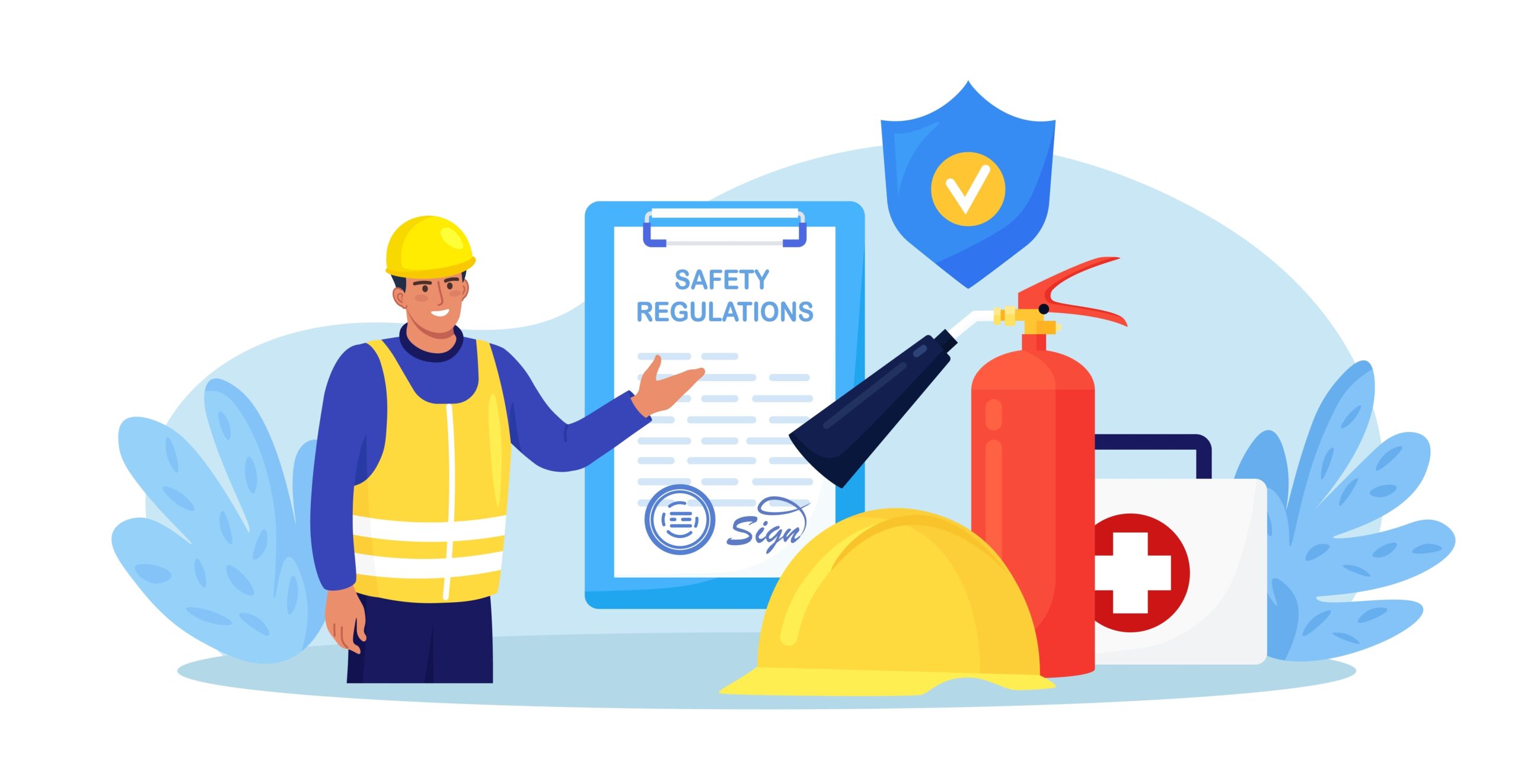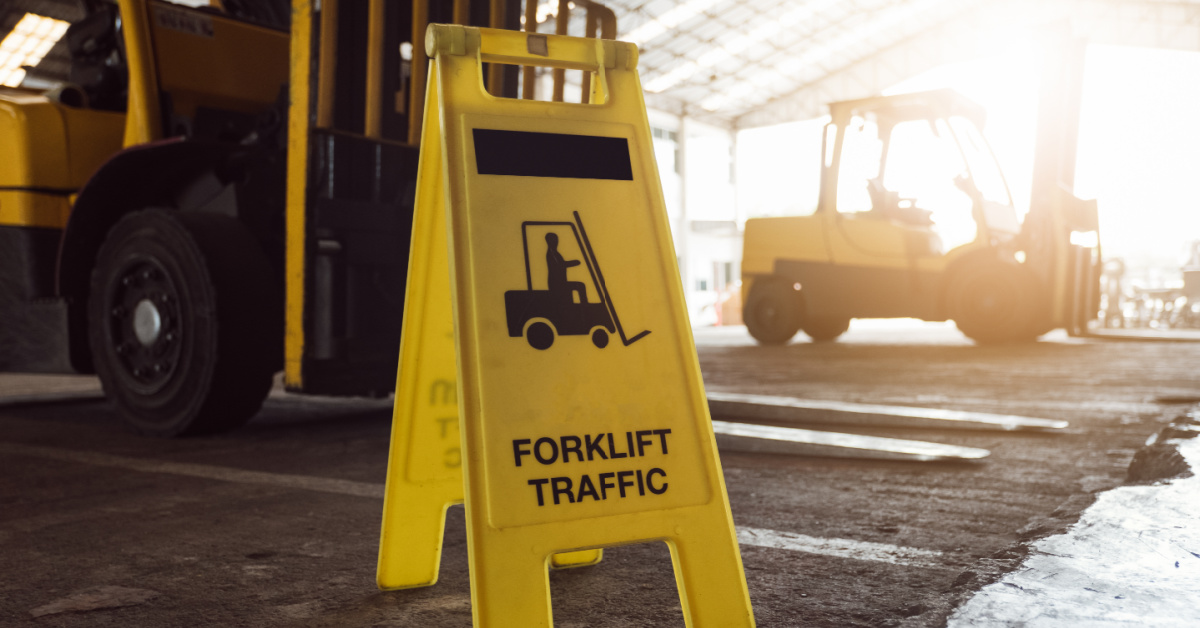Workplace Safety Strategies: Tips to Improve Safety Training Retention
Posted on March 23, 2021

A safe workplace environment not only protects workers from injury and possible illness, it reduces the risk of turnover — and has the added benefit of increasing employee productivity and morale!
That’s why many companies implement safety orientations with employees when they begin a job, regardless of whether they are short-term or long-term workers.
Unfortunately, it’s not guaranteed that employees will remember what they are taught during that initial safety orientation.
While getting accustomed to a job, new workers can get overwhelmed learning other aspects of the job and will remember only a fraction of the safety information they were taught. Not to mention that people just naturally tend to forget information over time.
Luckily, there are things employers can do to ensure employees are set up for safety success that goes beyond their initial onboarding.
We will break down just how these recommended strategies can help employers improve the safety information retention rate of their workers.
Best Practices to Increase Safety Training Retention
Design your safety training to resonate with different learning styles.
Different people learn differently. Some people are visual learners, auditory learners, kinesthetic learners, and so on.
Tailor your safety training to the different types of learning styles. It will go a long way in making sure your new workers absorb and retain the important information you’re providing in your safety orientations.
One thing you can do is craft a training around the Hear it, See it, Do it model.
Here’s an overview and how it supports learning across all styles:
- Hear it: Discuss your company’s relevant safety hazards and safety measures, through a formal presentation or a more conversational tone.
Useful for auditory learners: Auditory learners learn best by hearing information, rather than seeing or reading it. They will benefit from listening to you explain safety measures. - See it: Supplement your presentation with some visuals. A PowerPoint, video or handout packet can go a long way in making sure employees retain information.
Useful for visual and read/write learners: Visual learners absorb information by seeing and observing. They benefit from images, graphs, and charts. A read/write learner prefers to get their information through text. - Do it: Once employees have seen and heard the information, give them a chance to put it into practice.
Useful for kinesthetic learners: A kinesthetic learner tends to be more hands-on and needs to actively participate in their learning experience.
Following these steps will not only benefit individuals with different learning styles, it will also help them retain the information shared in your safety trainings.
Schedule regular safety refreshers.
If you only provide safety training during their initial onboarding, employees might either miss critical information, or simply forget it with time.
One of the best ways to ensure they remember what you teach them is simply to repeat it.
Studies show that people tend to retain information better when it is repeated. So, if you want to make sure you have an effective safety orientation, don’t limit your training to just one session.
Instead, build in a timeline of short and long-term refreshers. For example, do a follow-up within two weeks of the orientation and another one after three months.
During these follow-ups, review some key training elements. Ask your staff some questions to ensure they understood and retained the information. Or even, ask them to demonstrate some safety best practices.
And, of course, give employees the opportunity to ask questions of their own!
Make safety part of your culture.
Some companies offer incentives and rewards to employees who demonstrate outstanding safety knowledge.
However, companies with the most effective safety training programs make safety part of the company culture. Safety is talked about regularly and prioritized by employees across all levels of the company.
That’s why the surest way to make safety an inherent part of your company is to include as many people as possible in your safety process.
Here’s who should be involved in your safety process—and why:
- Upper Management: The involvement of upper management in your safety process will help establish the importance of safety throughout the company. It sets the tone and shows workers that their employers take safety seriously. This can boost morale and reduce turnover.
- HR, Supervisors and Team Leads: Have as many people as you can involved in conducting safety training. Not only does it ensure that more people are fully safety-competent, it also ensures that workers have more people to reach out to with questions, instead of taking unnecessary risks
- Employees: Give employees the option to be involved in safety orientations/trainings. It will go a long way in making sure they are fully proficient in safety procedures and are able to help others when needed.
Not all companies will have the same safety protocols, so all safety orientations will be different. But if you follow these three strategies you’ll increase your chances of safety knowledge retention and ensure that your employees are set up for safety success. All of which will ultimately result in lower injuries (and related costs), higher job satisfaction and better employee retention!
Safety is just good business.
More Safety Orientation Best Practices
Want more information on how to ensure information retention and how to design and implement an effective safety program? We’ve got you covered!
Tiffany Knudsen, Content Manager at Archbright, recently gave a great presentation entitled, New Hire Safety Orientations – Beyond the First Week of Employment, as part of TERRA’s free HR HotSpot series. In this webinar, she shared in-depth strategies to plan and execute an effective safety orientation, one that goes beyond the initial onboarding of new employees.
Tiffany is a Safety/Loss Control expert. She has over a decade of experience in safety training and safety-related assistance. She is also a certified Medic First Aid, Instructor Trainer, and has worked for years as an EMT, Firefighter and as a National EMT Instructor.
Watch her full webinar here:
How TERRA Can Help
TERRA Staffing Group is a leading staffing agency, headquartered in the Pacific Northwest. We work with many companies across a variety of industries in the Seattle-Puget Sound, Portland, Phoenix, and Denver metro areas.
Our monthly HR HotSpot webinars provide guidance, solutions, and best practices for HR professionals and business leaders.
These free webinars feature insight from industry leaders and experts on a wide variety of topics related to today’s workplace. Topics include: safety, performance management, talent engagement, diversity and inclusion, HR advice, and much more.
And if you find yourself needing staffing support, don’t hesitate to reach out to TERRA. Our expert team is eager to be a resource to you.
Categories: Workplace Safety & Accident Prevention
Tags: HR HotSpot, safety orientation, workplace safety, Workplace Safety Tips




